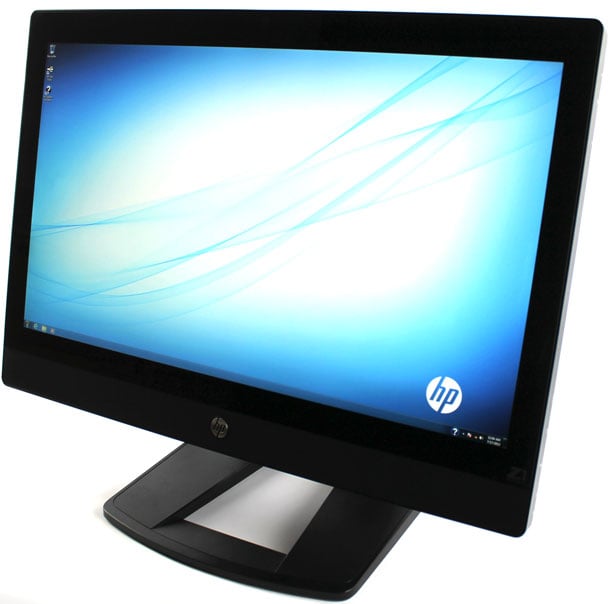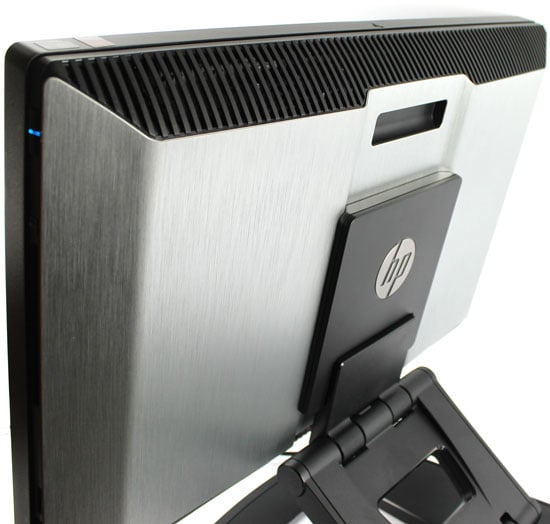HP Z1 27-inch AIO Workstation Review
Introduction and Specifications
Mainstream All-In-One PCs have become increasingly more popular in recent years, but AIO workstations remain a rare breed. After all, workstations typically require more horsepower than your average AIO, and IT folks demand better access to a computer’s internals than most ordinary AIOs allow. That makes HP’s Z1 workstation all the more attractive perhaps: it’s meant to give you the power and access of your big workstation box in a small footprint, with no (or few) compromises.
For the purposes of this review, HP configured a relatively powerful Z1 designed for multimedia content creation. The system is configured with some high-end components, as is evident by its $3,344.80 asking price. As such, it has some heavy hitters on board, including a quad-core Xeon processor and discreet workstation-class graphics card, but not the top components in the Z series lineup.
That quad-core processor featured in the system is an Intel Xeon E3-1245v2, which is less than a year old. The CPU runs its four cores at 3.4GHz and has 8MB of cache. It supports error correction code (ECC) memory, which is ordinarily a tricky component to put in a slim computer, as ECC memory generally resides on full-height DIMMs. HP made room for the full-size memory in the Z1 series and installed 4GB DDR3-1600 ECC DIMMs into the system’s four memory slots, for a total of 16GB of memory.
Graphics are powered by NVIDIA’s Quadro K3000M, which is designed specifically for AIO workstations. It has 2GB of GDDR5 memory and 240 CUDA Cores, and has only a 75W TDP. This card is one step below the top of the line - the Q4000M takes that spot – but it’s plenty powerful for a range of uses.
HP rounded out the system with a 1TB Western Digital Velociraptor hard drive. The 2.5-inch drive looks tiny in the HDD bay, which is designed to accommodate full-size hard drives. The system also includes a 400W power supply, which is a fairly powerful PSU for an AIO.
The Z1 features a gigabit LAN port, as well as 802.11 a/b/g/n connectivity, but its Bluetooth 3.0 feature is a generation old. The biggest differentiator between Bluetooth 3.0 and 4.0 is the latter’s lower energy consumption, so it's not necessarily a problem with a desktop system such as this. The system will work with peripherals that have the newer Bluetooth standard, however.
Now, let’s dig into what makes the Z1 so interesting: its design.
HP Z1 All-In-One Workstation
Before we dive into the Z1 specifications (and its gorgeous, 27-inch display), we should give some background. HP has been receiving critical praise of late for its Z220 workstations, which are minitower/SFF systems that squeeze workstation components into cases with small footprints. HP is building on that success with a new line (the upcoming HP Z230 series), but it also opted to branch out into the AIO workstation space with the Z1 we'll be showing you here. The result is that the Z1 is a reflection of the Z220 series, and that’s helpful if you’ve used a Z220 in the past. HP tells us that virtually all components available for the Z220 series are available for the Z1, and that you can expect the same level of performance from a Z1 as a similarly-configured Z220. And as it does with the Z220, HP is generally able to make the latest parts (most importantly, processors) available for the Z1 on day one of the part’s launch.
|
| Operating System: |
Windows 7 Pro 64-bit |
|
| Display: | 27-inch LED IPS Display at 2560 x 1440 |
|
| Processor: | Intel Xeon E3-1245v2 Quad-Core(3.4GHz, TurboBoost to 3.8GHz) | |
| Chipset: | Intel C206 | |
| Memory: | 16GB DDR3-1600 ECC (4x4GB) |
|
| Graphics: | NVIDIA Quadro K3000M 2GB | |
| Storage: | 1TB WD1000CHTZ 2.5-inch HDD | |
| Optical Drive: | Slot Load 8X SuperMulti DVDRW | |
| PSU: |
400W HP 90% efficient | |
| Audio: | SRS Premium Sound, Dual-Cone Speakers | |
| Webcam: | 1080p 2.0MP Webcam | |
| Ports: | 2x USB 3.0, 4x USB 2.0, FireWire, DisplayPort In/Out, Subwoofer, Mic/Headphone, 6-in-1 Media Card Reader | |
| Connectivity: | Gigabit LAN, Wi-Fi a/b/g/n, Bluetooth 3.0 | |
| Cooling: | Internal fans | |
| Software: |
CyberLink Power2Go, HP MyDisplay, HP Performance Advisor, HP Power Assistant | |
| Peripherals: |
HP Wireless Keyboard and Mouse | |
| Warranty: | HP Three-Year Warranty | |
| Starting Price: | $1,899 | |
| As Configured: | $3,344.80 MSRP - Currently lower on Amazon |
For the purposes of this review, HP configured a relatively powerful Z1 designed for multimedia content creation. The system is configured with some high-end components, as is evident by its $3,344.80 asking price. As such, it has some heavy hitters on board, including a quad-core Xeon processor and discreet workstation-class graphics card, but not the top components in the Z series lineup.
That quad-core processor featured in the system is an Intel Xeon E3-1245v2, which is less than a year old. The CPU runs its four cores at 3.4GHz and has 8MB of cache. It supports error correction code (ECC) memory, which is ordinarily a tricky component to put in a slim computer, as ECC memory generally resides on full-height DIMMs. HP made room for the full-size memory in the Z1 series and installed 4GB DDR3-1600 ECC DIMMs into the system’s four memory slots, for a total of 16GB of memory.
Graphics are powered by NVIDIA’s Quadro K3000M, which is designed specifically for AIO workstations. It has 2GB of GDDR5 memory and 240 CUDA Cores, and has only a 75W TDP. This card is one step below the top of the line - the Q4000M takes that spot – but it’s plenty powerful for a range of uses.
HP rounded out the system with a 1TB Western Digital Velociraptor hard drive. The 2.5-inch drive looks tiny in the HDD bay, which is designed to accommodate full-size hard drives. The system also includes a 400W power supply, which is a fairly powerful PSU for an AIO.
The HP Z1 Workstation all-in-one has a clean look that makes it a fit for desks facing into a room.
On the outside are a total of 6 USB ports, two of which are USB 3.0. That’s a little disappointing; we’d like to see more USB 3.0 ports on new system like this. The upcoming Z230 towers, for example, will have four USB 3.0 ports (two up front and another two in the back), but it’s a minor quibble. FireWire, DisplayPort, and mic/headphone ports are available, as well as a 6-in-1 media card reader. The Z1 features a gigabit LAN port, as well as 802.11 a/b/g/n connectivity, but its Bluetooth 3.0 feature is a generation old. The biggest differentiator between Bluetooth 3.0 and 4.0 is the latter’s lower energy consumption, so it's not necessarily a problem with a desktop system such as this. The system will work with peripherals that have the newer Bluetooth standard, however.
Now, let’s dig into what makes the Z1 so interesting: its design.








